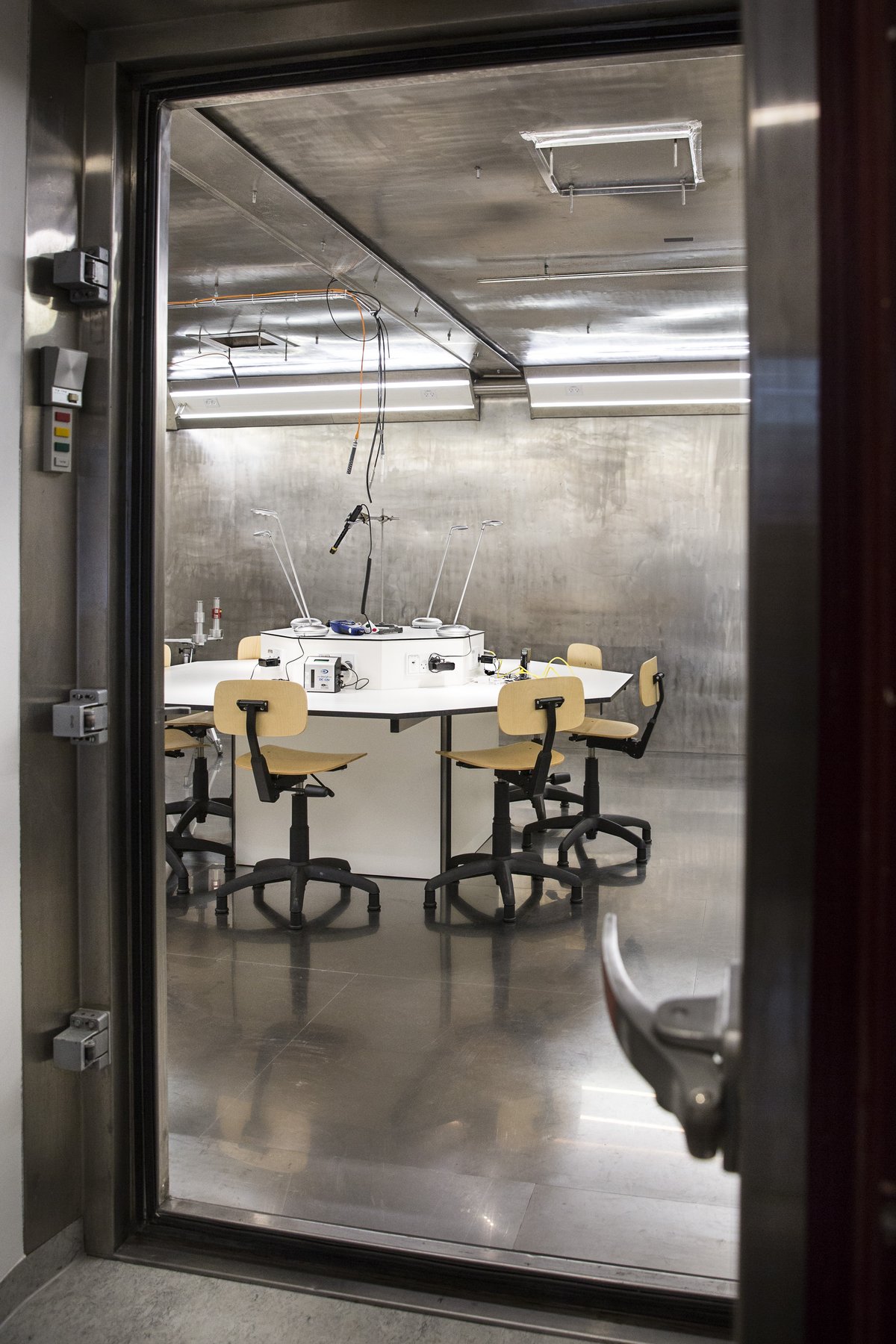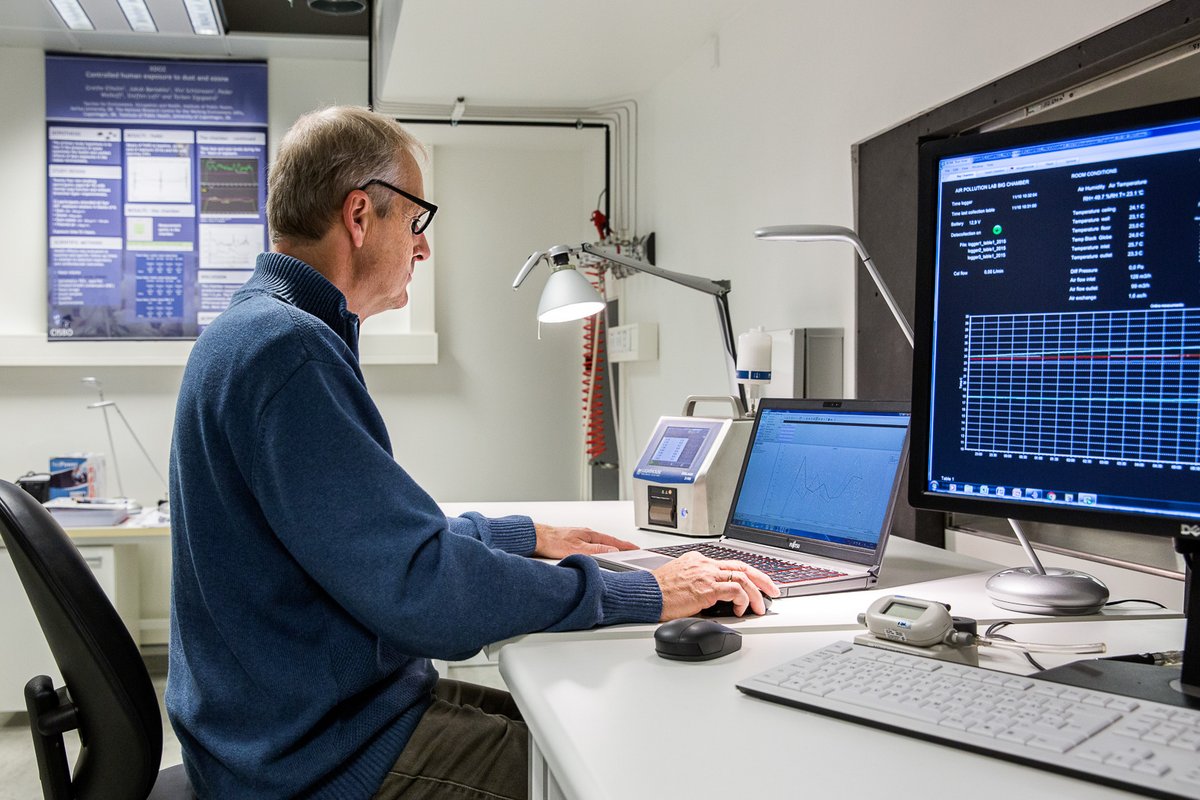Services and facilities
In the Climate Chambers, it is possible to conduct well-controlled studies of environmental factors with the aim of providing better documentation on how factors in the environment affect humans and our health.
Exposure Studies
Exposures can be in the form of particles and gases, such as smoke from wood stoves, cooking fumes, and candles, as well as nitrogen oxide known from pollution from diesel cars or in the form of, for example, pollen, dust mites, etc.
Health Measurements
We perform lung function measurement - spirometry, measure particles (biomarkers) in exhaled air via PExA, Acoustic rhinometry for measuring nasal cavity volume, tests for allergic diseases using skin prick tests, blood sampling, urine collection, and saliva samples.
Climate Chambers
The climate chambers consist of two stainless steel chambers of 79m3 and 32m3 respectively.
They are unique both in terms of physical design and the associated technology, and we can control and regulate all parameters down to the smallest detail.
In the climate chambers, we can:
- Purify exposure air through advanced filter systems and then add the desired environmental exposures in very precise doses.
- Introduce completely purified air with environmental pollutants in very precise dosages for up to 12 hours.
- Simulate and document exposures of different types of climates from normal indoor climate to extreme climatic conditions such as desert climate (dry-hot), arctic climate (dry-cold), or tropical climate (humid-hot).
- Simulate circadian rhythm by varying light conditions.
- Allow longer stays in the chambers for up to a week.
- Conduct experiments with people in groups from 2-8 persons under controlled and well-documented conditions for climate, as well as pollution,
- Test the health of trial subjects before, during, and after exposure.

